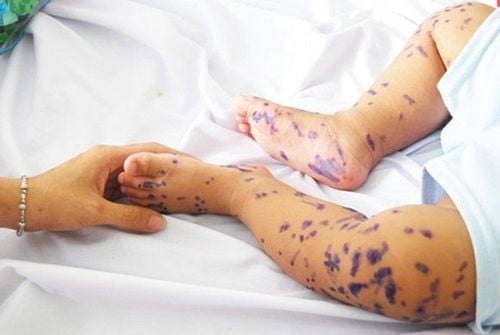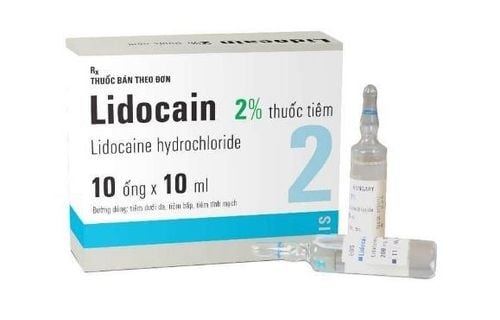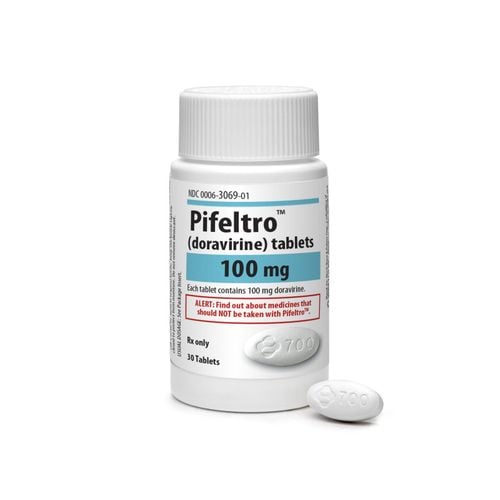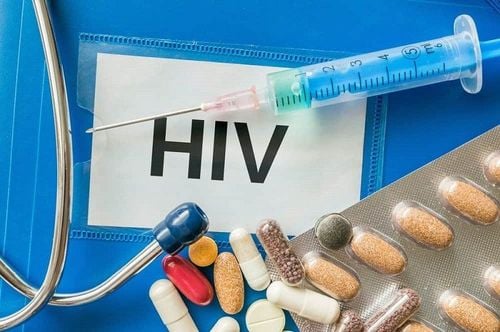This is an automatically translated article.
Hand, foot and mouth disease is an acute infectious disease commonly seen in children under 10 years of age, especially children 3 -5 years old. Symptoms are characterized by fever, sore throat, and a blistering rash on the hands, feet, and mouth that often progresses to ulcers. These lesions can be found on the tongue, gums, and inside the cheeks. Many patients are misdiagnosed with other skin diseases such as chickenpox, allergies,... leading to incorrect treatment and spreading the disease.
1. Why can hand foot and mouth disease be re-infected?
Enterovirus viruses are the cause of hand, foot and mouth disease. This group includes various types such as poliovirus, coxsackievirus, echovirus and other enteroviruses.
Hand, foot and mouth disease is mainly caused by coxsackievirus A16 with few complications and usually resolves on its own. However, the disease can also originate from Enterovirus group viruses, including enterovirus 71 (EV71) with many dangerous complications and can lead to death.
Each infection, the body only produces antibodies to a certain virus, so regardless of whether children or adults can be re-infected if infected with another virus of the enterovirus group.
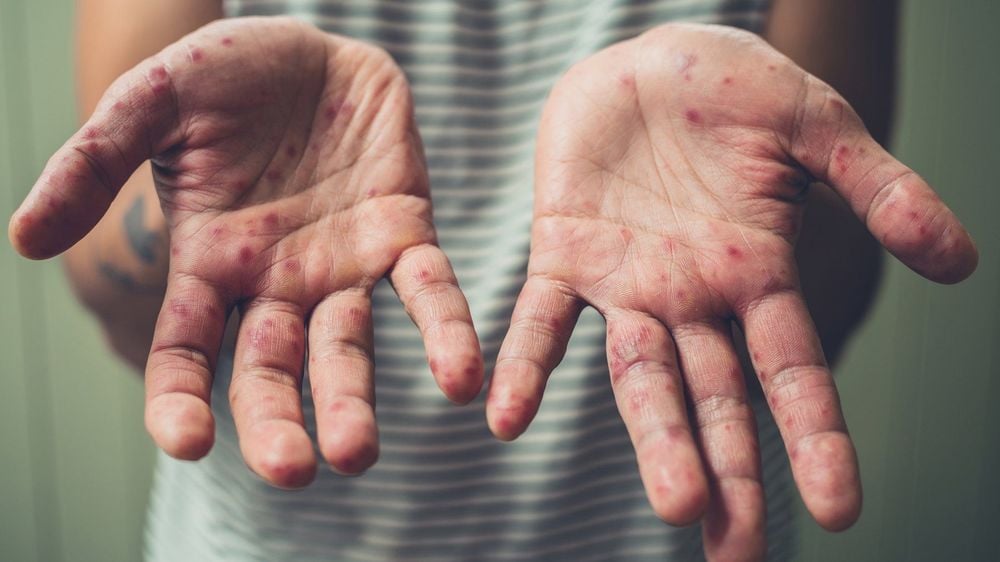
Người bệnh có thể tái nhiễm bệnh trở lại nếu bị nhiễm virus khác thuộc nhóm enterovirus.
2. Danger level of hand, foot and mouth disease
People with hand, foot and mouth disease and mild coxsackievirus A16 infection recover in 7 to 10 days without medical treatment and have few complications.Dehydration is the most common complication of hand, foot and mouth disease caused by coxsackievirus infection. This complication can occur if the patient drinks too little fluid due to an ulcer in the oral cavity.
Rarely, coxsackievirus A16 infection has progressed to "sterile" meningitis or viral meningitis. However, many sick people with fever, headache, stiff neck or back pain may require hospitalization for several days.
Hand, foot and mouth disease caused by EV71 virus can progress to meningitis and encephalitis. In some cases, it can lead to serious complications, including neurological, cardiovascular, and respiratory complications. Deaths from the EV71 virus that cause encephalitis during outbreaks have been reported.
3. How long after infection do symptoms start to appear?
The usual incubation period (from infection to onset of symptoms) is 3-7 days. A fever lasting 24 to 48 hours is a common first symptom of hand, foot, and mouth disease. 3.1. How is hand, foot and mouth disease spread? The virus that causes hand, foot and mouth disease is capable of spreading from person to person through direct contact with nasopharyngeal secretions, saliva, fluid from blisters or feces of an infected person. The risk of transmission is greatest during the first week after infection, but the infectious period can last several weeks (because the virus is localized in the stool). This disease is not transmitted from pets or other animals to humans and vice versa.
3.2. Symptoms of Hand Foot and Mouth Disease The illness usually begins with fever, loss of appetite, malaise and sore throat. One to two days after a fever, painful sores appear in the mouth. These are red blisters at first and often develop into sores. These sores are mainly on the tongue, gums, and inside the cheeks. A non-pruritic rash appears for 1 to 2 days with flat or raised red lesions, some with blisters. The rash is usually on the palms or soles but can also appear on the buttocks and/or genitals. Patients may be asymptomatic or may develop only a rash or mouth ulcers.
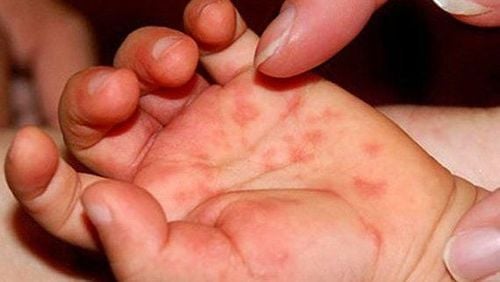
Bệnh nhân có thể bị phát ban không ngứa xuất hiện trong 1 - 2 ngày với các tổn thương màu đỏ.
4. Who is at risk of hand, foot and mouth disease?
Everyone who has never had the disease is at risk of infection, but not everyone infected with the virus will have symptoms.
Hand, foot and mouth disease mainly occurs in children under 10 years of age, usually in children under 5 years of age. The younger the child, the more severe the symptoms.
Children are at higher risk of virus infection and disease because they have weaker resistance and immunity than adults. Most adults are immune, but infections in adolescents and adults are not uncommon.
5. How to treat and prevent hand, foot and mouth disease?
There are no antiviral drugs or specific vaccines to prevent non-polio enteroviruses, the causative agent of hand, foot and mouth disease. The risk of infection can be reduced by strict hygiene measures and prompt medical intervention when a child has severe symptoms. Patients should drink plenty of fluids and may take medication to treat symptoms such as fever or pain from sores.
Precautionary measures include:
Wash hands often with soap and water after contact with blisters or sores, before cooking or before eating, before feeding children, after walking cleaning and changing diapers. Clean contaminated surfaces and objects (including toys) first with soap and water, then disinfect with diluted chlorine bleach. Avoiding direct contact (hugging, kissing, sharing utensils,...) with infected children also helps reduce the risk of infection. Do not let sick infants and children go to daycares, kindergartens, schools or large gatherings until they are well. Closely monitor the condition of the infected child and get medical intervention promptly if the fever persists, loss of consciousness and/or general condition worsens. Cover your nose and mouth when sneezing or coughing. Throw used tissues and diapers in a covered trash can. Maintain hygiene at home, daycare, kindergarten or at school. When children have signs and symptoms of hand, foot and mouth disease, you should take them to reputable centers/hospitals for timely diagnosis and examination. Pediatrics Department at Vinmec International General Hospital is the address for receiving and examining diseases that infants and young children are susceptible to: viral fever, bacterial fever, otitis media, pneumonia in children ,....With modern equipment, sterile space will minimize the impact as well as the risk of disease spread. Along with that is the dedication from the doctors with professional experience with pediatric patients, making the examination no longer a concern of the parents.
Please dial HOTLINE for more information or register for an appointment HERE. Download MyVinmec app to make appointments faster and to manage your bookings easily.
Article referenced source: World Health Organization



